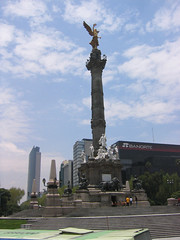
One of the main avenues in the city, and one of the nicest, is the "Paseo de la Reforma." The broad avenue has many roundabouts with diverse monuments, statues, and fountains which never seem to stay put. Any changes are usually cause for fervent protest (more on that to come in future posts.) This avenue was started by Emperor Maximilian for his personal transport from the Castle of Chapultepec to the Plaza Mayor. The avenue was at that time named the "Paseo de la Emperatriz" (Avenue of the Empress), until Maximilian was executed, when its name was changed to the "Paseo del Degollado" (Avenue of the Beheaded--though he was actually shot) and it was opened for public use. In the 1870's, after President Benito Juárez's death, the name of the avenue was changed to Reforma, after the reform laws promulgated by Juárez. This avenue is where you'll find the famous column of the angel of independence. The column was inaugurated the 16th of September of 1910 to celebrate the 100th year anniversary of our independence from Spain. We just call it "el ángel" for short.
The statue actually fell during the earthquake of 1957. Supposedly a friend of my dad's had the squashed head in his office for a while, but I never know which of my father's colorful stories I'm supposed to believe.
Some other fun facts about the column:
- Since the city was built on a filled-in lake, 25 meter pillars were sunk to reach solid enough ground to support the monument. The rest of the city has been sinking, making it necessary to add 14 steps over the years.
- The remains of several heroes of the "Independencia" are in a mausoleum inside the monument.
- The angel of victory weighs 7 metric tons.
Another famous monument on Reforma, which was actually just moved and uncovered in its new location today, is the statue of Cuauhtemoc, the last Aztec emperor. Amusingly enough, the statue was just one roundabout over from the statue of Christopher Columbus, nicely illustrating the mixed history of Mexico.
The zoo, the Chapultepec Castle, the Anthropology Museum, the Museum of Modern Art...all of these are on the part of Reforma that has the most trees. Here are some other pictures of the avenue, including the Columbus monument:
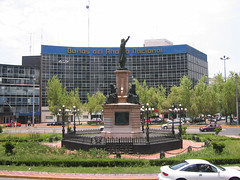
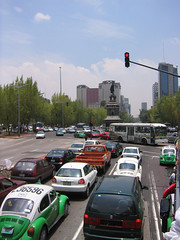
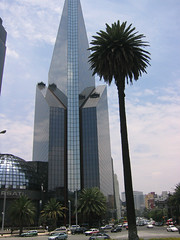

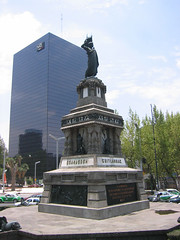



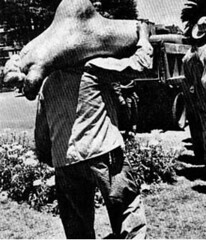

0 Comments:
Publicar un comentario
<< Home